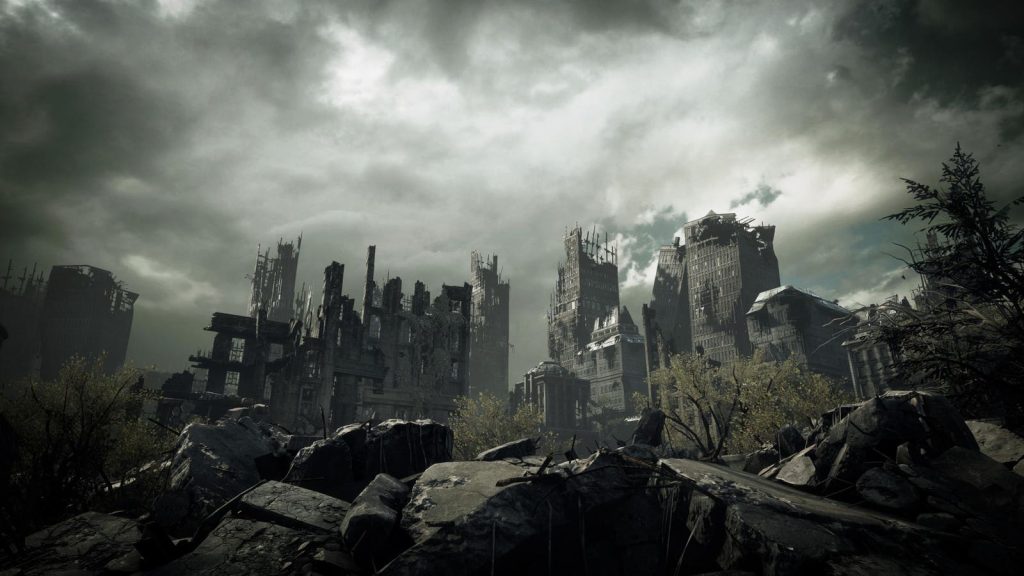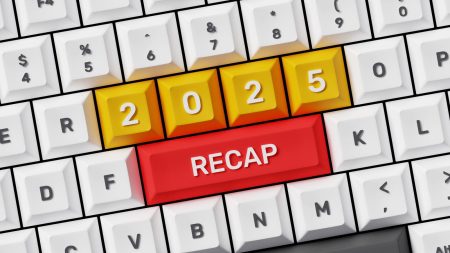The issue of climate narratives is something very much on my mind these days. Two years ago I wrote about five climate change narratives (Scientific, Skeptical, Doomsday, Opportunistic, and Moral) and three months ago I wrote that we need a new American narrative for climate change. Thus it was with great interest that I read the recent paper “The Science vs. the Narrative vs. the Voters: Clarifying the Public Debate Around Energy and Climate” by Roger Pielke, Jr. and Ruy Teixeira of the American Enterprise institute (AEI). The paper is based on a survey of over 3,000 voters that was conducted for AEI by YouGov between September 20-26, 2024. The findings are fascinating and telling. They are also important to take into account when constructing a narrative about climate change in America that will lead to stable, long-term bipartisan policies. Political oscillations are as much of a challenge to dealing with climate change as climate change itself.
The fundamental thesis of the paper is that “Both the public’s views and the Intergovernmental Panel on Climate Change’s (IPCC) scientific analysis differ in important respects from a narrative that has come to dominate the mainstream media discourse and public understandings of climate and energy.” In short, the media has largely adopted a Doomsday scenario which is at odds with the position of the IPCC. At the same time, and somewhat ironically, the result is a public perception that the IPCC’s views are more catastrophic than they really are. The AEI report notes that “the IPCC does not associate climate change with existential, apocalyptic, or catastrophic outcomes.” Yet 77% of respondents answered “Yes” to the question “Does the IPCC think there is a tipping point beyond which temperature rise from the current day will produce catastrophic results for human civilization?”
Especially telling is how stable this number is. My fellow Ph.D. sociologist Ruy Teixeira kindly provided me the detailed crosstabs for the survey. The range around 77% was tight and insignificant across age groups, gender, race, marital status, having children under 18 or not, full time vs. non-full time employment, union household or not, and income. Not surprisingly, the biggest ranges were along the political dimension. The highest percentage was for registered Democrats (86%), liberals (91%), and Biden voters (87%). Independents and moderates were at 77%. Republicans, conservatives, and Trump voters were all at 66%. This shows how pervasive the Doomsday scenario has become even as people are leaving mainstream media for their own social media echo chambers which tend to both have more misinformation and higher levels of engagement. But you have to love the irony of the 66% groups being a bit less uninformed about what the IPCC has to say than the others.
To be sure, the IPCC report discusses tipping points at various temperature levels—such as species extinction, irreversible biodiversity loss, and loss of ice sheets in Greenland and West Antarctic—and these are serious. But they don’t mean the end of human civilization. To be clear, I should also say that there is a great deal of uncertainty about tipping points. They are low probability/high impact scenarios which can be extremely consequential. They are “fat-tail” risks for which it is very difficult to assign a precise probability. These scenarios aren’t something to ignore but to leap from them to the end of human civilization is bad science and a sure-fire way to alienate Americans who see climate change as a real issue.
Americans’ View of Climate Change
Which is most of them. According to a Spring 2025 report “Climate Change in the American Mind: Beliefs & Attitudes” by the Yale Program on Climate Communication and the George Mason University Center for Climate Change Communication, 69% of Americans believe climate change is happening vs. only 15% who do not. Sixty percent believe it is mostly caused by human activity vs. 28% who believe it is caused mostly by changes in the natural environment. And 65% are at least somewhat worried about it, including 29% who are very worried.
Extreme Doomsday narratives are more part of the problem than part of the solution to dealing with climate change. Some people will find the Doomsday narrative noncredible. Just because a person said “Yes” to some supposed claim by the IPCC doesn’t mean they agree it’s going to happen. Some will simply see the IPCC as no different from a very left wing NGO instead of a collection of scientific experts. If anything, it could lead to a thermostatic reaction of not taking climate change seriously at all. I’d be surprised if a single one of those 3,000 survey respondents have read this report and no reason to expect them to. So they’re going with a perception they’ve picked up from a general narrative, not the report itself.
For other people, this narrative only makes things worse when it comes to addressing the issue. There is extensive behavioral science research showing the apocalyptic depictions can get people’s attention in the short term, over the long term they can lead to anxiety, fatalism, or disengagement, especially among those already facing social or economic stress. Consider these numbers from the Yale/George Mason report about how Americans feel about climate change: Many Americans say they feel the following emotions about global warming: interested (58%), sad (44%), disgusted (44%), afraid (39%), anxious (39%), angry (39%), hopeful (38%), outraged (36%), hopeless (34%), or depressed (28%). I fail to see how a message of “We are all doomed unless you drive an EV and become vegan” is very helpful to addressing the problem. What Americans need to know is that climate change is a serious challenge but one we can address if we come together, ignore the extreme climate activists and climate change deniers, and develop have sensible bipartisan policies that enable rather than interferes with market forces. This is the message in a book I’ve just finished which will come out early next year.
Origins of the Doomsday Narrative
Pielke and Teixeira do a nice job of explaining how the Doomsday narrative came about and the role of individuals (e.g., Al Gore, Bill McKibben, Alexandra Ocasio-Cortez, António Guterres, Greta Thunberg David Wallace-Wells) and organizations (e.g., 350.org, Earthjustice, Greenpeace, the Sierra Club, and the Sunrise Movement) in making this happen. They summarize this dominant narrative in mainstream media in seven points which I can summarize in three:
- Fossil fuels and anyone associated with them are evil, including you if you don’t agree with this.
- Renewable energy can solve everything and has no downside.
- The only thing preventing a dramatic, even total, shift from fossils fuels to renewable energy is the lack of political will due to ignorant and/or corrupt people.
This narrative has “made it the conventional wisdom of the college-educated left, much of the center, and the mainstream media.” They explain how this narrative basically took over the Democratic Party’s position on climate change from the 2012 Obama era of “all of the above” when it comes to energy sources to the “renewables or bust” one today.
The Ecoright
Something else has changed over the past dozen years or so. The emergence of the so-called “Ecoright” which I discuss in this RepublicEn podcast. These organizations are focused on climate change but from a conservative perspective. Over the past two years I’ve gotten to know many of them and have worked with them in a variety of ways including Alliance for Market Solutions, American Conservation Coalition, C3 Solutions, Citizens for Responsible Energy Solutions, ClearPath, Climate Solutions Fund, DEPLOY/US, RepublicEN, and the R Street Institute. I think the work they are doing is far more important for addressing the challenge of climate change than the loud and shrill rhetoric and performative actions (e.g., protests, boycotts, and some shareholder proposals) coming out of the far left climate catastrophe crowd.
The Ecoright has no illusions about the seriousness of climate change. It acknowledges the importance of mitigation but pays more attention to adaptation than the Doomsday diktats. It has an “all of the above” approach to energy sources with an emphasis on market forces. They are no more enthusiastic than I am about the Statist approach Trump is taking to emphasizing fossil fuels over wind and solar than I am. The Ecoright recognizes the importance of innovation and new technologies, including those that are unpalatable to the far left such as nuclear and carbon capture and storage. It is very pragmatic about the importance of issues such as improving the electrical grid and making permitting easier, topics rarely discussed on the left since it’s so busy screaming about fossil fuels. It also recognizes the important role that public policy and regulation has to play, and that it needs to be bipartisan.
Do I agree with them on everything? Of course not. And they don’t all 100% agree with each other. Climate change is an incredibly complicated topic and we need many ideas to test and discuss. I support a price on carbon; some of the Ecoright do and some don’t. I’m more comfortable with regulation than they are. I’m more supportive of sensible subsidies for wind and solar for a limited period then they are.
But here’s the thing and I find it very telling. All of these folks know I’m a liberal with very different political views than theirs. Yet it’s easier for me to have civil and constructive discussions with them about climate change than with the people and organizations on the far left. The diehard climate activists have an orthodoxy from which even the slightest deviation is apostasy. Fall completely into line or you’re cast out of the Climate Church and branded as a climate-change denier or, even worse, a Republican!
Don’t believe me? Send this little piece to some of your diehard climate activist friends and see what they have to say.
Read the full article here









